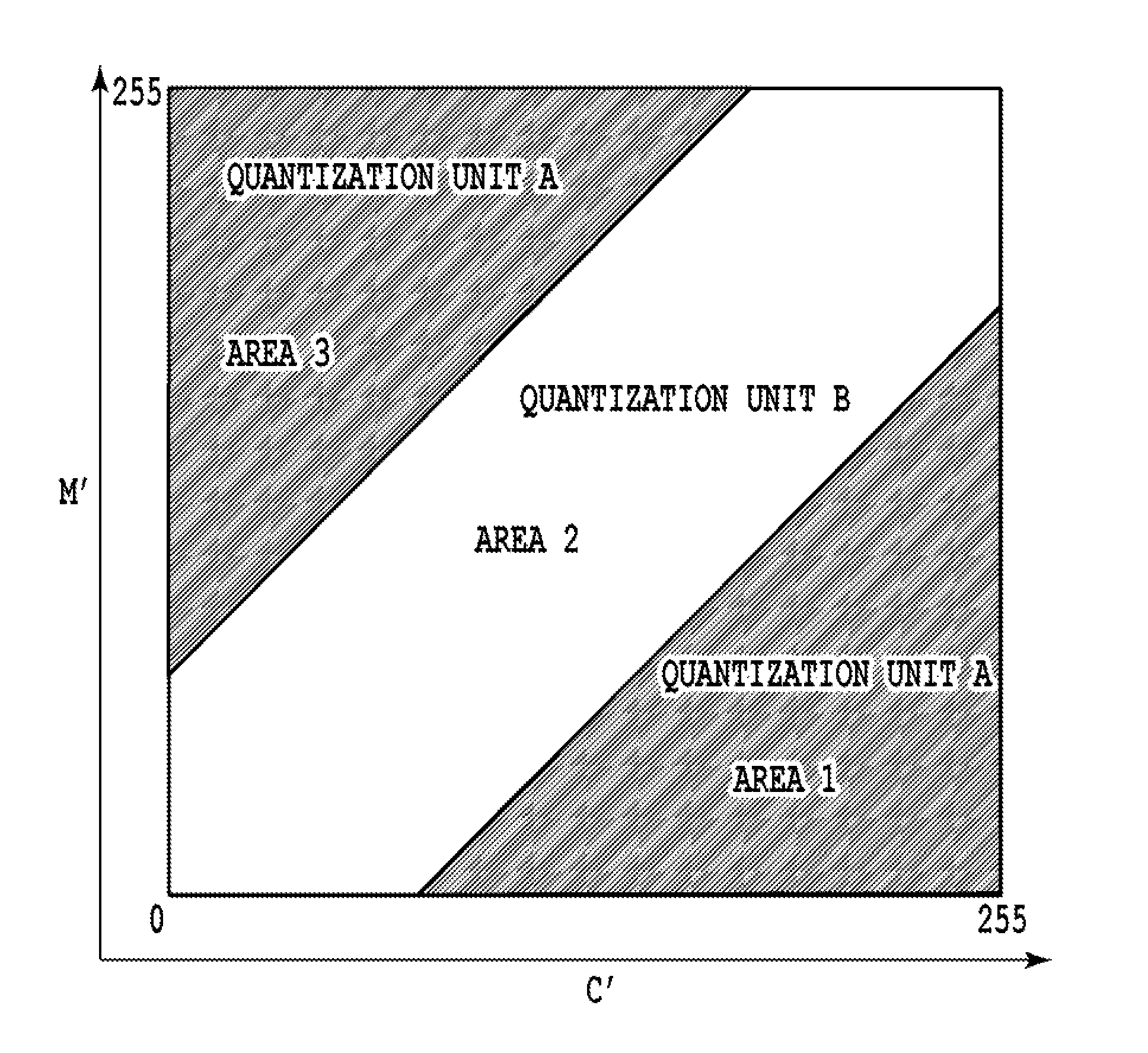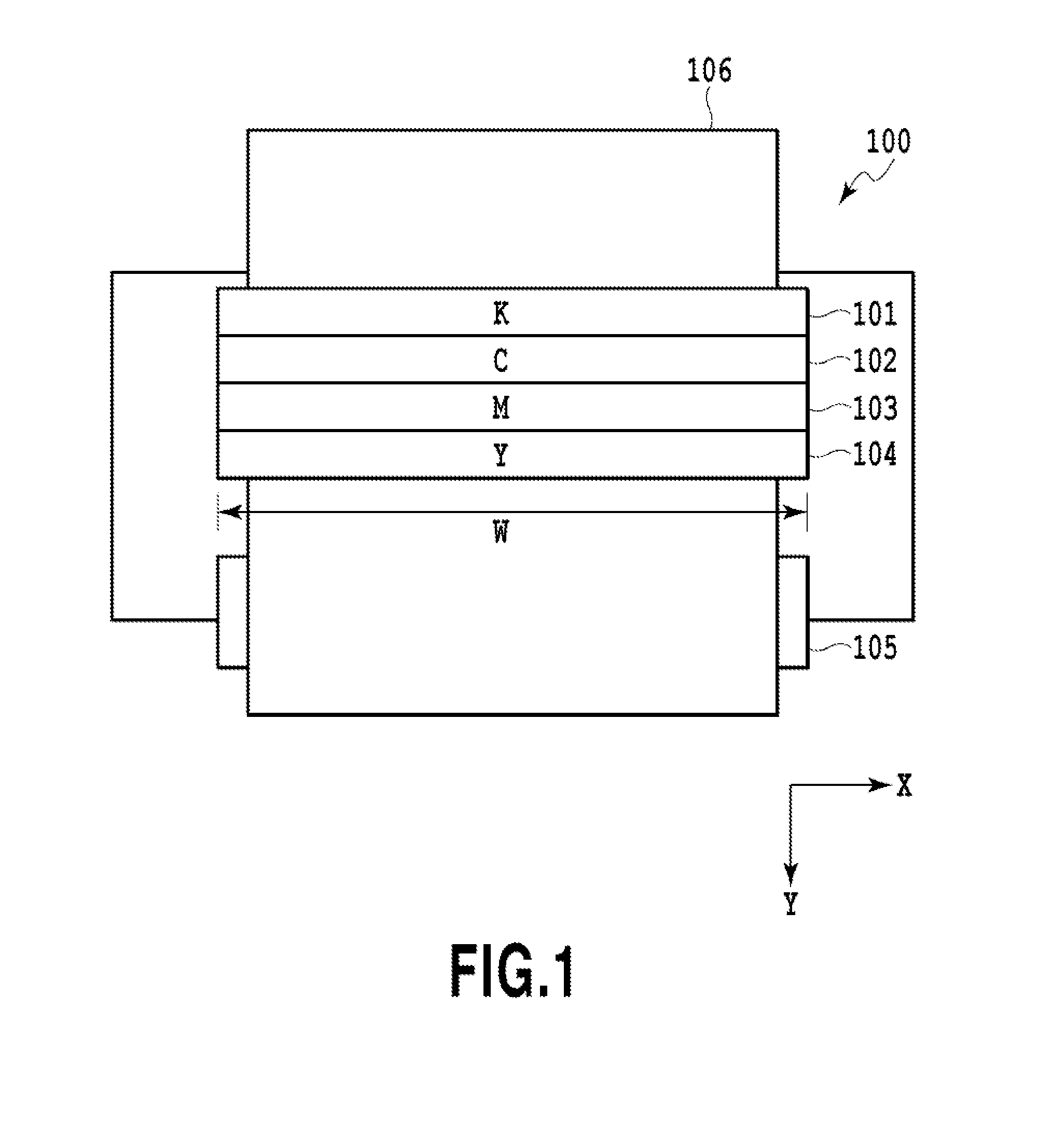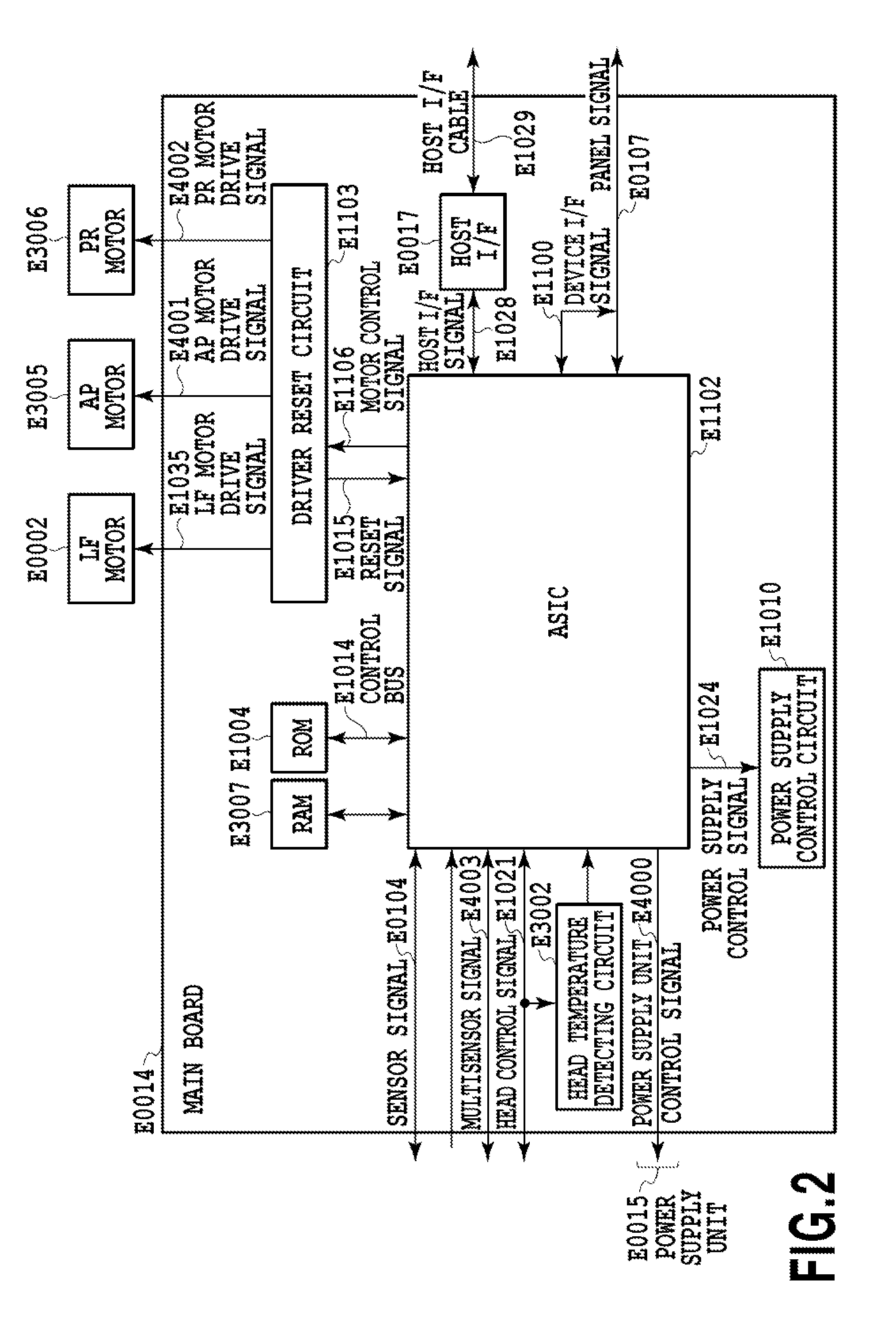Image processing apparatus and image processing method
- Summary
- Abstract
- Description
- Claims
- Application Information
AI Technical Summary
Benefits of technology
Problems solved by technology
Method used
Image
Examples
first embodiment
[0027]FIG. 1 is a top view of a printing unit of a full-line type inkjet printing apparatus (image forming apparatus) applicable to the present embodiment. In the inkjet printing apparatus 100, print heads 101 to 104 are fixedly equipped on a frame as illustrated in the view. In each of the print heads 101 to 104, multiple printing elements ejecting a corresponding single color of black (K), cyan (C), magenta (M), and yellow (Y) inks are arrayed at regular pitches in an X direction in the view correspondingly to the width W of a print medium 106. The print medium 106 is conveyed at a constant rate in a Y direction as a conveyance roller 105 is rotated by an unillustrated motor as a driving source. In the course of the conveyance, each of the printing elements ejects a corresponding color of the inks according to print data to thereby print a predetermined image on the print medium 106.
[0028]FIG. 2 is a block diagram illustrating an internal configuration of a printer engine accordin...
second embodiment
[0054]FIG. 6 is a main part block diagram for explaining image processing performed by an ASIC E1102 in the present embodiment. A point of difference from the first embodiment illustrated in FIG. 3 is that a dot generation history detecting unit 601 is prepared. In the present embodiment, the dot distribution estimating unit 312 selects one of the set of quantization units A and the set of quantization units B on the basis of, in addition to the output value C′ from the cyan gradation correcting process 302 and the output value M′ from the magenta gradation correcting process 303, an output value from the dot generation history detecting unit 601, as well.
[0055]Inkjet printing used in the present embodiment is configured to apply a voltage pulse to a heater equipped for each printing element according to a print signal. Also, the inkjet printing is configured to generate film boiling in ink in contact with the heater, and eject the ink as a droplet by growth energy based on the film...
third embodiment
[0062]FIG. 8 is a main part block diagram for explaining image processing performed by an ASIC E1102 in the present embodiment. A point of difference from the second embodiment illustrated in FIG. 6 is that in place of the dot generation history detecting unit 601, a temperature detecting unit 801 is prepared. The temperature detecting unit 801 detects current temperatures of the print heads 102 and 103, and outputs values of the temperatures to the dot distribution estimating unit 312. Then, the dot distribution estimating unit 312 selects any one of the set of quantization units A and the set of quantization units B on the basis of, in addition to the output value C′ from the cyan gradation correcting process 302 and the output value M′ from the magenta gradation correcting process 303, the temperature detected values from the temperature detecting unit 801, as well.
[0063]In the present embodiment, as well, the tables illustrated in FIGS. 7A and 7B can be used. For example, in the...
PUM
 Login to View More
Login to View More Abstract
Description
Claims
Application Information
 Login to View More
Login to View More - Generate Ideas
- Intellectual Property
- Life Sciences
- Materials
- Tech Scout
- Unparalleled Data Quality
- Higher Quality Content
- 60% Fewer Hallucinations
Browse by: Latest US Patents, China's latest patents, Technical Efficacy Thesaurus, Application Domain, Technology Topic, Popular Technical Reports.
© 2025 PatSnap. All rights reserved.Legal|Privacy policy|Modern Slavery Act Transparency Statement|Sitemap|About US| Contact US: help@patsnap.com



